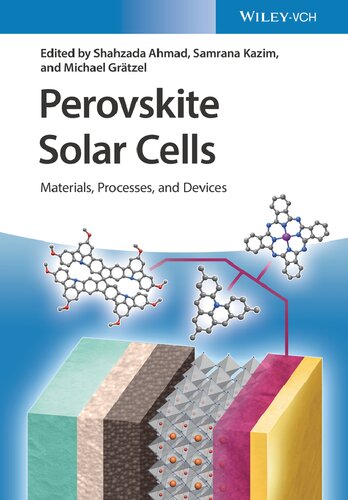

Most ebook files are in PDF format, so you can easily read them using various software such as Foxit Reader or directly on the Google Chrome browser.
Some ebook files are released by publishers in other formats such as .awz, .mobi, .epub, .fb2, etc. You may need to install specific software to read these formats on mobile/PC, such as Calibre.
Please read the tutorial at this link: https://ebookbell.com/faq
We offer FREE conversion to the popular formats you request; however, this may take some time. Therefore, right after payment, please email us, and we will try to provide the service as quickly as possible.
For some exceptional file formats or broken links (if any), please refrain from opening any disputes. Instead, email us first, and we will try to assist within a maximum of 6 hours.
EbookBell Team

4.1
100 reviewsPresents a thorough overview of perovskite research, written by leaders in the field of photovoltaics
The use of perovskite-structured materials to produce high-efficiency solar cells is a subject of growing interest for academic researchers and industry professionals alike. Due to their excellent light absorption, longevity, and charge-carrier properties, perovskite solar cells show great promise as a low-cost, industry-scalable alternative to conventional photovoltaic cells.
Perovskite Solar Cells: Materials, Processes, and Devices provides an up-to-date overview of the current state of perovskite solar cell research. Addressing the key areas in the rapidly growing field, this comprehensive volume covers novel materials, advanced theory, modelling and simulation, device physics, new processes, and the critical issue of solar cell stability. Contributions by an international panel of researchers highlight both the opportunities and challenges related to perovskite solar cells while offering detailed insights on topics such as the photon recycling processes, interfacial properties, and charge transfer principles of perovskite-based devices.
Perovskite Solar Cells: Materials, Processes, and Devices is essential reading for all those in the photovoltaic community, including materials scientists, surface physicists, surface chemists, solid state physicists, solid state chemists, and electrical engineers.